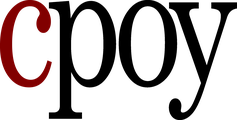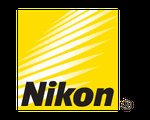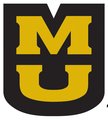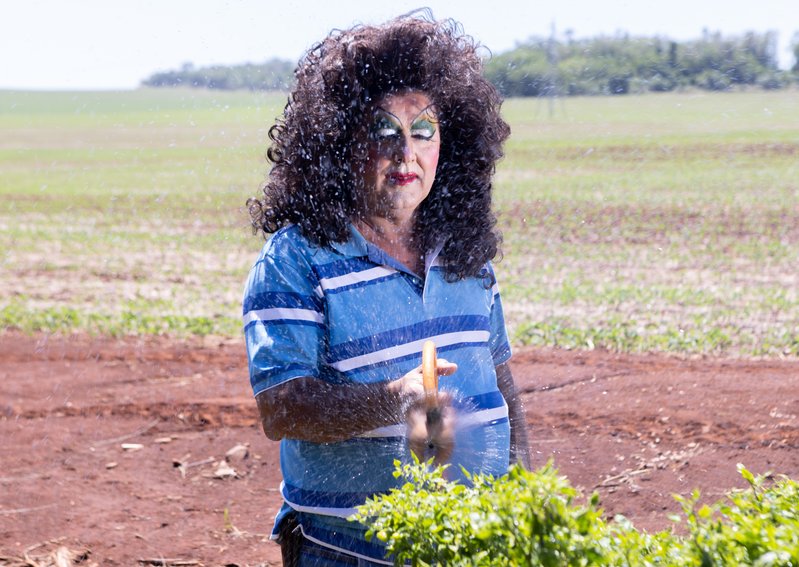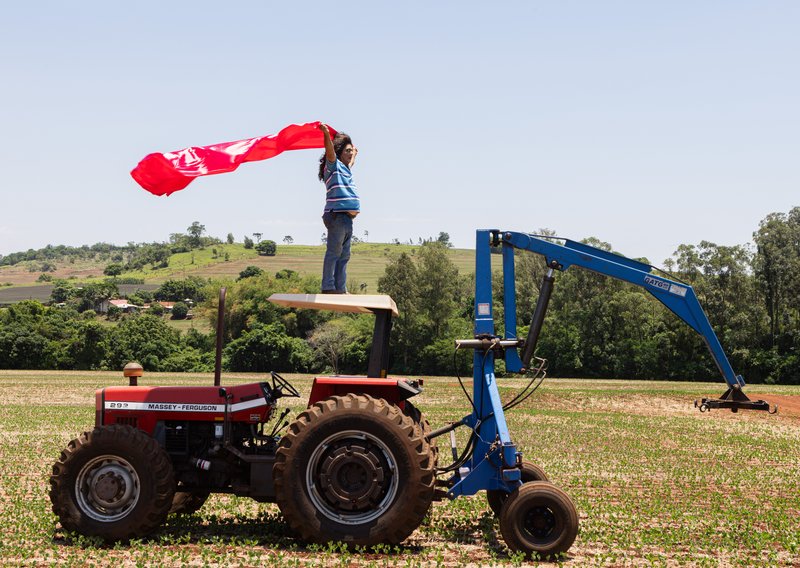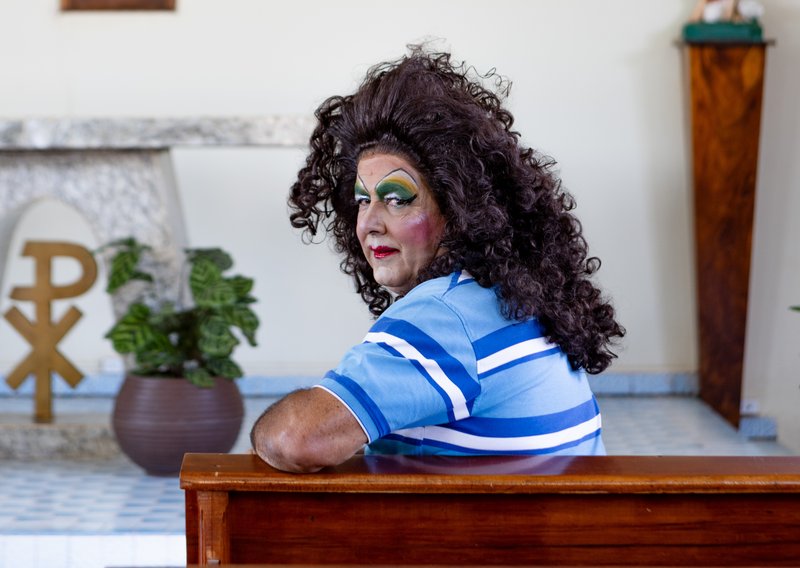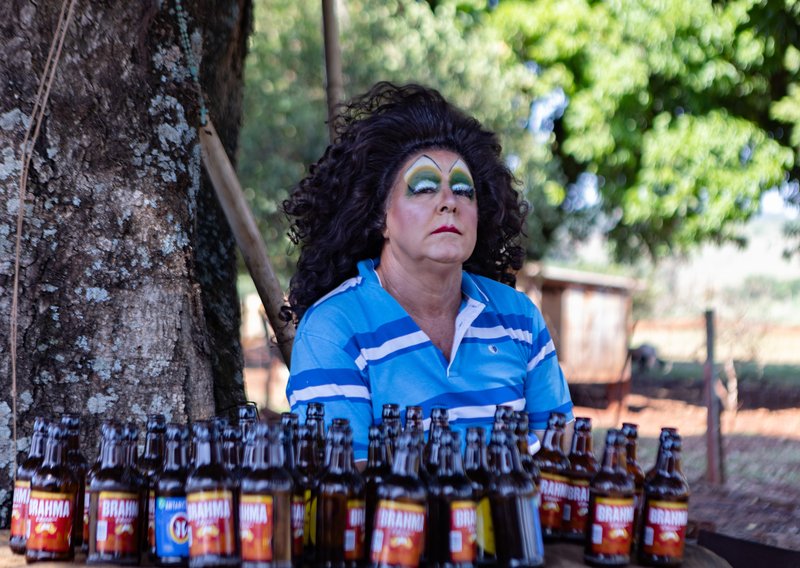Gold: Dear Father
Dear Father redefines the bond between father and son, exploring acceptance through a role reversal. As I painted my father's face, we forged a new understanding. He became the performer, while my queerness, long hair, and piercings became normalized. His exaggerated eyes, hair, and makeup transformed into a familiar reflection, allowing me to step out of my performance.
I photographed my father, a traditional farmer and religious man performing everyday tasks on our Brazilian farm, aiming to recapture childhood memories. Familiar scenes of him tending the farm, riding his motorcycle, or slaughtering a sheep were given new life by his willingness to do so in drag.
This engaged and expressive man, keen to be photographed up close in full makeup, was someone I had never recognized before. The project became a meeting point between photographer and subject, father and son.
Having faced misunderstanding and haunted by the boy who despised himself for being gay, who didn’t become a farmer or engineer, but was labelled ‘golo’ (a family’s dialect homophobic slur), this project directly addresses those who misunderstand and label. ‘Golo’ once taunted me, but now it inspires me to create change. In Dear Father, I have escaped this colloquial tag through an experimental and intimate exploration of our relationship. The project has become a means for my father to demonstrate his acceptance and encouragement, bringing us to communicate our feelings and sending a clear message to extended family and friends in Brazil who labelled me.
Dear Father has become a cherished, microcosmic yet profound message that we are all capable of understanding much more than we realize. My father, riding his motorbike through the farm with the wind flowing through his bouffant hair, is a testament to that on so many levels.
Dear Father, I want to look at you and see my reflection looking back at me, like a mirror.
The image portrays a person standing inside a barn, holding a large knife in one hand and gripping a pulley rope with the other. Suspended from the pulley is the carcass of a slaughtered sheep, its body hanging upside down, with blood dripping onto a large, bloodstained container beneath it. The carcass appears to have been partially skinned, and the setting suggests a rural, hands-on approach to farming or butchering. The individual is dressed in a blue striped polo shirt and jeans, with thick curly black wig and striking makeup. Their expression is calm and serious, and their makeup, with bold green eyeshadow and red lipstick, stands out sharply against the rugged, gritty atmosphere of the barn. The contrast between the person's theatrical appearance and the earthy, practical surroundings creates a strong visual tension. The barn is cluttered with various tools —buckets, ropes, and other farm-related equipment—lining the shelves along the walls. The floor is covered with gravel, and natural light filters in from the far side of the barn, illuminating the scene. The presence of both the knife and the carcass suggests a visceral, hands-on task that contrasts with the person’s glamorous appearance. The image evokes complex themes of identity, tradition, and confrontation with uncomfortable realities. There’s a palpable sense of tension between the outward performance of identity and the gritty, physical task at hand, making the scene feel deeply personal and thought-provoking.
